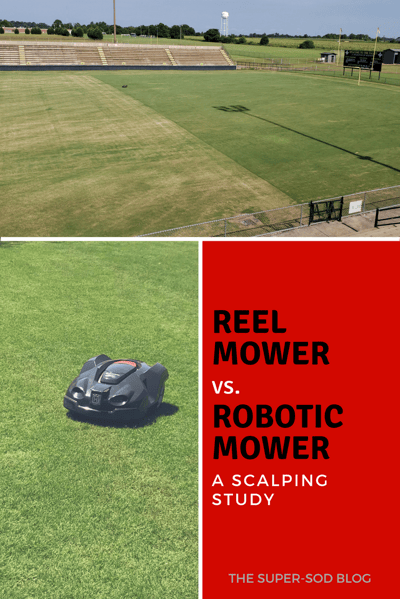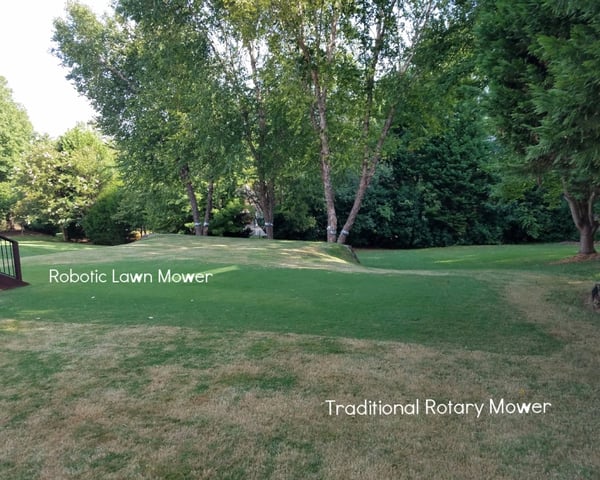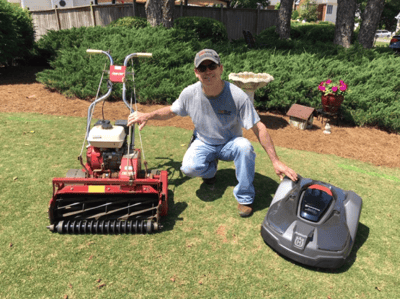

Reel Mower vs. Robotic Lawn Mower – A Scalping Study

“It’s about as exciting as watching grass grow.”
One of my favorite idioms, this means whatever you’re describing is extremely boring and typically slow.
I couldn’t find the origin of the idiom, but I did find that Colorado one homeowner has had a live webcam feed of his lawn growing since 2005 and has quite a following under the name "Mr. Grass." Thank you, strange and wonderful Internet.
Even if you’re not watching Mr. Grass’s lawn feed, observing grass grow may be a tiny bit more exciting these days. Summer has brought sunshine and a plenty of showers to douse our lawns. Grass seems to be shooting up faster than ever. Maybe even a little too fast.
With conventional lawn mowers, we wait for the grass to dry before mowing. Before it’s dry enough, another afternoon rainstorm pops up to continue the vicious cycle until blades of grass tickle your ankles.
When the opportunity to mow the lawn finally comes, you get frustrated and set the lawn mower to the lowest possible height. Who knows when you’ll get the opportunity to mow it again?
However, chopping off more than 1/3 of the blade at a time results in the ugly brown scalping that leaves your lawn (and likely you) in a sad state. The answer to your rainy day problems is simple: a robotic lawn mower.
Gridiron Greatness

You’ll see scalping on the left side of this football field above. The left half of the field was mowed with a reel mower – not exactly ready for Friday night lights – even though it was mowed by the former gold standard in lawn care, the reel mower.
The right side was maintained with an robotic lawn mower for one week in the middle of the summer (July 2018) before this picture was taken. The difference is staggering.
By mowing tiny clippings each day, this Georgia robot installation prevented scalping. The secret? Robotic mowers aren't fazed by the rain. We leave ours, named MowBee by popular vote, outside during the pop-up rainstorms. MowBee keeps meandering along and mowing as rain falls around .
Unless you’re mowing your lawn each day to take off only millimeters at a time, you simply cannot get a cut as clean as a robot over the course of a week. As the photo shows above, this robotic lawn mower installation improved upon the work of the preferred mower of lawn maintenance gurus – the reel mower.
Honing in on the Home Lawn
You may not be looking for football field standards, but you still want to be proud of your yard. A robot can help with that, too!
Daniel, the manager of our Forest Park store, prides himself on his TifTuf Bermuda backyard. His Bermudagrass lawn went from sub-par to perfection when he started using a robotic mower that his family named "The Goat."
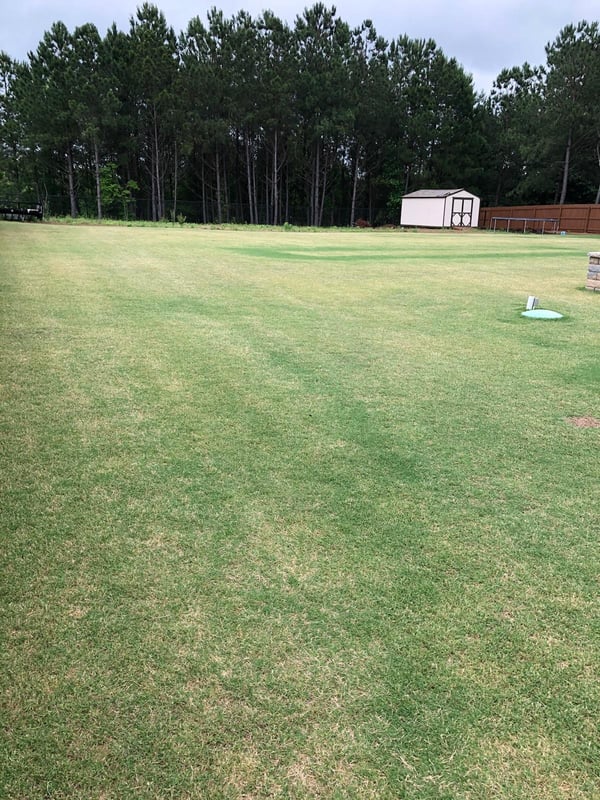
You can see the first mowing after spring green-up with a conventional riding mower scalped the grass.
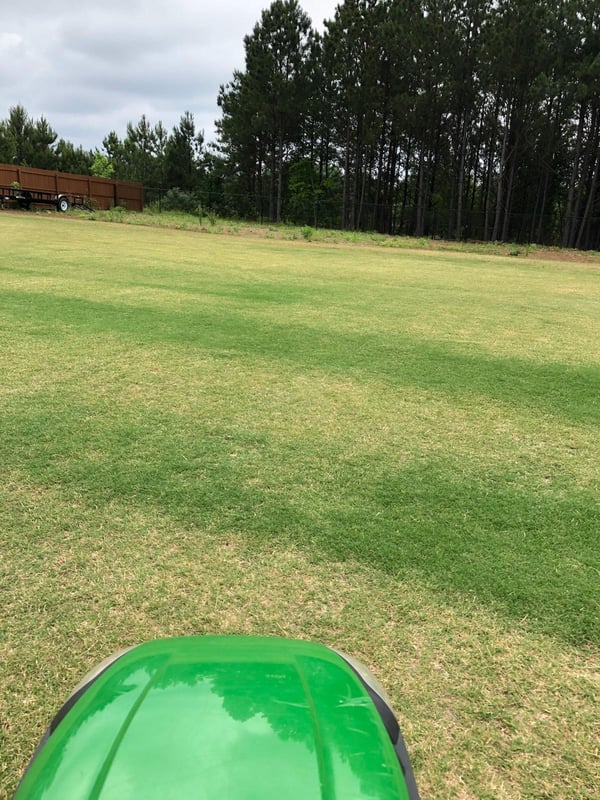
Improvement came with robotic mowing and one round of an Agrivator aeration machine during the growing season.

In July, the final picture below shows consistent quality thanks to their robotic mower they've named "The Goat". It conserves water and provides tiny clippings that act as natural fertilizer.
A Worthy Investment
This isn’t the first time a robotic mower has proved its worth on a home lawn. In Charlotte, North Carolina, a robot competed with a for the best solution on a bermuda lawn. You can see for yourself the drastic differences and read the story in this blog post.
Become a Robot Expert
We started on an idiom, so why don’t we end on one, too?
They say, “A picture’s worth a thousand words.” If these pictures and words haven’t already convinced you of the advantages of installing a robotic lawn mower, you’re a tough cookie.
